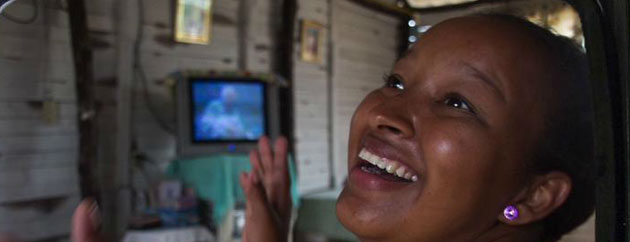
Telenovela: Colombia’s Daily Fix
16 July, 2012Every night at five to eight a wave of urgency sweeps Colombia. Families bolt from the dinner table. Last orders are placed at the local bar before all the waiters go on a break. Routine chores are put on hold. It’s time for the telenovela. At least this was the scene a few years ago when soap operas like Café, screened on one of the three national TV channels, provided a fix of daily cheer, set in a picturesque land far removed from a Colombia tormented by civil violence. The telenovelas became so popular that they were even adapted to radio to make sure people could keep following them in case of a power shortage.
Whilst Colombia has begun to leave its troubled past behind and modern households have access to the plethora of channels and programmes available on Cable TV, the Colombian telenovela has not lost popularity. In fact, Colombians no longer have to wait until 8pm as soap operas can be seen at almost any time of day. Cheaply imported Mexican and Venezuelan soap operas are screened throughout the day, whilst the ‘best’ ones, made in Colombia, are reserved for prime time TV.
So why are these soap operas so popular? Whether you enjoy soap operas or not, it cannot be denied that Colombian telenovelas are extremely well made and have served as a success model for countries around the world. Making their mark on the international scene with what is now seen as an icon of Colombia’s modern cultural heritage, Yo Soy Betty, La Fea (Ugly Betty), was exported to and adapted by many countries around the world and was watched by millions of viewers. In Colombia alone, the series was watched by 28 million viewers, some 70% of the population.
Whilst it is therefore clear that Colombian soap operas hold high entertainment value, the sheer popularity of this pastime has been said to reflect on a society that still wishes to escape from the problem-filled reality of daily life in the country. As the RCN telenovela director will tell us, it is his job not only to help people share emotions, but to create dreams.
From the RCN television studios in Bogota to a community wiring up a television aerial on the beach on the island of Baru, Cartagena, this multimedia piece gives us a small insight into the phenomenon of the Colombian telenovela.
Rebecca Radmore: Director / Photographer
Harryet Bellwood-Howard: Co-Producer
Elio Pena: Co-Editor
Follow Sounds and Colours: Facebook / Twitter / Instagram / Mixcloud / Soundcloud / Bandcamp
Subscribe to the Sounds and Colours Newsletter for regular updates, news and competitions bringing the best of Latin American culture direct to your Inbox.

